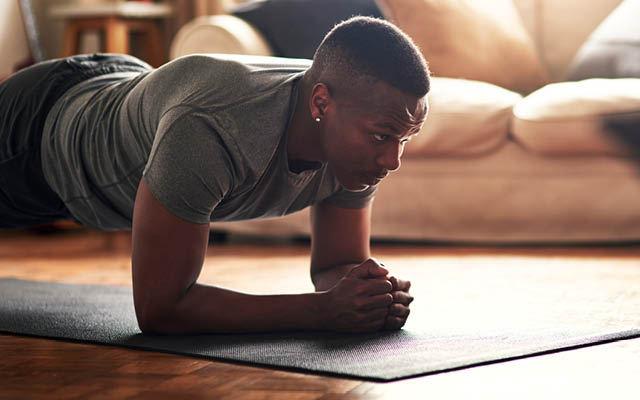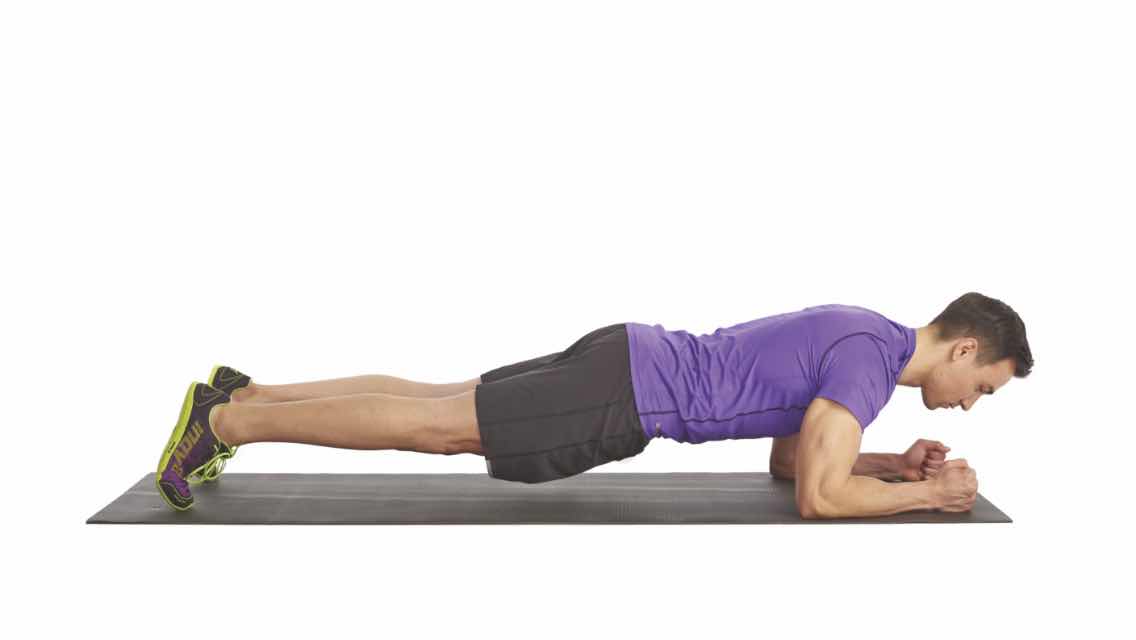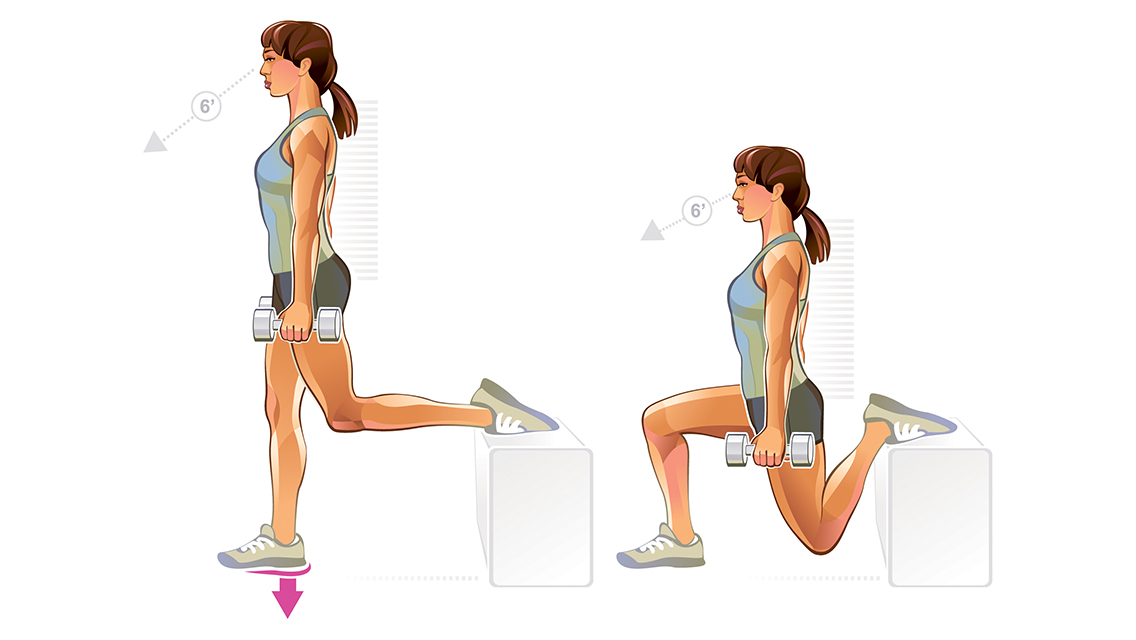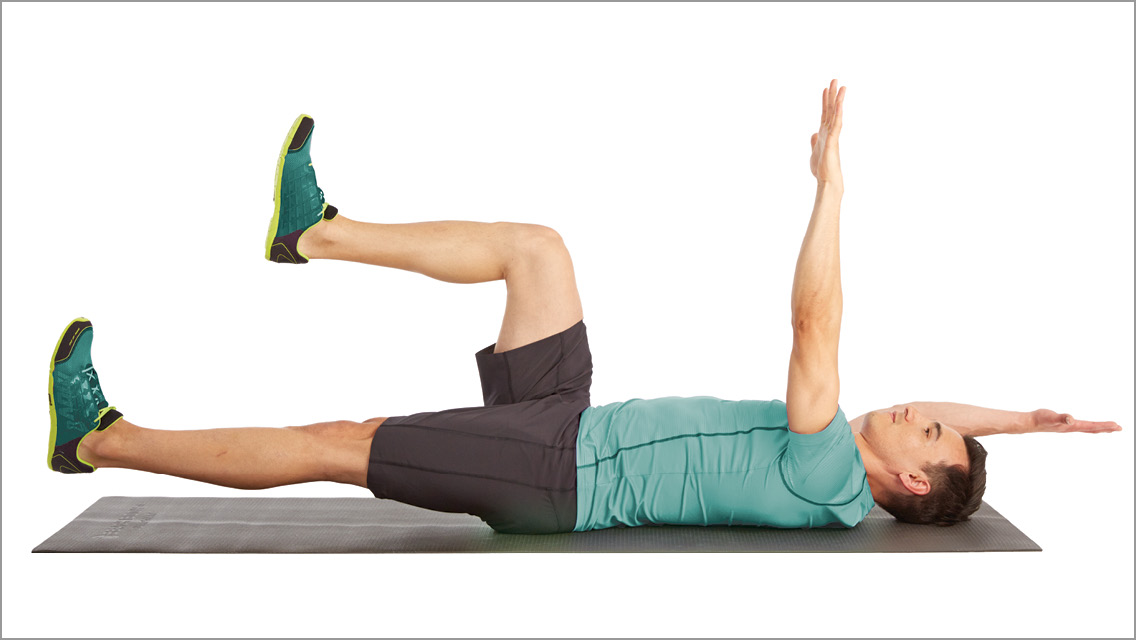The core and glutes get a lot of attention — for aesthetic reasons, yes, but also because of their function. The abdominals make up the so-called core of the body, while the glutes are major muscles of the hips that require a strong core to anchor them.
The abdominal muscles that wrap around the torso provide structural support in all we do. While we run, lift, jump, and lie in savasana, the core helps protect the spine, allows for rotation and antirotation of the body, and encourages full, deep breaths. Meanwhile, the glutes coordinate with the muscles of the core to help the body move efficiently.
The focus on the abs and glutes has nearly evolved into an obsession, says performance coach Greg Roskopf. It emphasizes a continual hyperarousal of our hips and midsections as we constantly strive to brace, engage, activate, or otherwise fire our belly and butt muscles.
But for all this squeezing and clenching, our glutes and abs aren’t much better off. “Those are the areas where I most often find neurological weaknesses,” says Roskopf, who helps professional athletes properly activate lagging muscle groups. Extra tensing and tightening can impair otherwise good form, inhibiting progress and potentially causing discomfort or injury.
Our muscles are used most efficiently when they can turn “on” and “off,” to use common fitness jargon. In other words, there’s a time for tension and a time for relaxation.
Educating yourself about body mechanics and developing awareness of your unique body are the best ways to practice putting your abs and glutes to optimal use.
There was a time when the terms “abs” and “glutes” weren’t even part of the fitness lexicon. Things have certainly changed: Most exercisers these days know that the core is more than a six-pack of superficial musculature. It is a girdle of muscle — three layers thick — that surrounds your waist, including:
- External obliques
- Internal obliques
- Rectus abdominis, or the six-pack muscle, on the front of your belly.
- Transverse abdominis, the innermost belt of muscle that pulls your belly button inward.
Together, the abdominal muscles bend, rotate, and fold your torso forward, back, and to the sides. Perhaps more important, they also help resist unwanted torso movement, thereby protecting your spine from excessive movement and injury. (Learn more about the core at “How to Create a Strong Core”.)
Various other smaller muscles in the hips and back contribute to stability through the torso.
The glutes have similarly important functions. They consist of three major muscles:
- Gluteus maximus, which makes up the meat of your butt.
- Gluteus medius and gluteus minimus, on the sides of your hips.
The glutes extend your legs — pulling your thighs backward when you run, for example. They also pull your legs away from your centerline and rotate them outward. When they work properly, the glutes help stabilize your knees and lower back. (For more on glute and hip function, check out “Healthy, Happy Hips”.)
Over time, back pain, hip inflexibility, and inactivity may inhibit and weaken the abs, glutes, or both. That’s why learning to activate these muscles properly can be an important early step to restoring correct functioning, particularly if you’re returning to exercise after injury or taking a break. (Find more advice on returning to exercise at “5 Ways to Get Your Fitness Routine Back on Track”.)
Build Awareness
There’s nothing wrong with a little flexing. But problems can arise during your workouts when you unnecessarily clench your muscles.
“The most efficient movement is one without extra tension,” explains Roskopf. Consciously contracting additional muscles introduces tension that throws off the smooth execution of the movement — and sometimes makes the exercise harder.
Let’s say you’re doing a plank, the pushup-hold that’s long been a core-building staple. If you do it correctly — body straight; back in its natural arch; hips in line with your head, heels, and upper back — your core is already engaged. There’s no way around it.
But if you overemphasize squeezing your glutes while doing a plank, you’ll turn an effective move into an exercise in unnecessary strain.
“If you fire the glutes without connection to the rest of your core, then you are leaving out the most important part of the exercise,” says Sonja R. Herbert, founder of Black Girl Pilates, a collective for Black female-identifying instructors.
The adductors (inner thighs), abductors (outer thighs), and the transverse abdominis all contribute to proper plank form, explains Herbert. If you overemphasize the glutes, the center of your plank will warp to the floor.
The lesson here is to focus on alignment and let your muscles do the work in the best position for your body, she adds, rather than trying to force the muscles to work as hard as they can.
Consider the plank example the next time you do a deadlift or kettlebell swing: At the top of these exercises, do you squeeze your butt so hard that your hips swing out in front of you? This is a common error that not only doesn’t improve strength and power but can also harm the lower back.
The correct alignment calls for full extension — but not hyperextension — of the hips and knees, with ribs and shoulders stacked directly over the hips. In this position, the glutes will engage to facilitate hip extension; the abs will engage to keep the bottom ribs down, not flaring out.
This guidance might be especially useful for those who say they can’t feel their muscles working, says Roskopf. By focusing on alignment, you can count on the fact that your muscles are there for you — even if you’re just starting to build your awareness of them.
Putting It All Together
Learning proper form across different exercises is a great way to improve alignment and develop body awareness.
You can do this by choosing exercises that activate the correct muscles automatically. Moves like the hip thrust, stability-ball kickback, and windshield wipers are good examples. They’ll give your glutes and abs plenty of work without requiring you to squeeze or clench.
Want to give your muscles an extra squeeze at the top of a move for good measure? Go for it — but don’t contract and flex when you don’t have to, and don’t call on muscles that don’t contribute to the proper execution of the move.
This article originally appeared as “Getting Engaged” in the March 2021 issue of Experience Life.
Try These Moves
Stability-Ball Kickbacks
- Lie prone on a stability ball with your palms on the floor for balance.
- With your head in alignment with your spine, your lower back in its natural arch, and your legs straight, raise your legs as high as possible behind you, spreading your legs wide and turning your feet outward at the top of the movement.
Hip Thrust
- Sit on the floor with your upper back braced against the long side of a weight bench (you may have to place the bench against a wall so it doesn’t move during the exercise).
- Bend your knees and place your feet flat on the floor, slightly wider than shoulder width, with your toes turned out slightly.
- Tuck your tailbone slightly.
- Press through your heels and drive your hips off the floor as far as possible.
- Pause, slowly reverse the move, and repeat.
- Too easy? Perform the move with a loaded barbell (padded in the middle) on your lap.
Quadruped Stepovers
- Assume an all-fours position: hands directly below your shoulders, knees directly below your hips, back in its natural arch, and your head in alignment with your spine.
- Extend your right leg directly behind you, parallel with the floor, and point your toe toward the floor.
- Rotate your leg and toe outward and raise your knee out to the side as high as you can, as if stepping over a high fence.
- Draw your knee to your chest.
- Without lowering your right knee to the floor, repeat the move for the appropriate number of reps, then repeat on the other side.
Windshield Wipers
- Lie on your back with your hands out to the sides and palms flat on the floor.
- With your knees slightly bent, raise your legs until they are about perpendicular to the floor.
- Slowly lower your legs to the right, stopping when your left shoulder blade loses contact with the floor.
- Reverse the move and repeat to the other side.
- Be conservative with this move: Do not use momentum and only go as far as you comfortably can in either direction. Work for perfect control, rather than a wide range of motion.
Tight Rotations
- Stand with your feet parallel and about two shoulder widths apart, your knees bent, and your torso upright.
- Extend your arms in front of your chest, with your palms together.
- Keeping your palms together, your shoulders down, and your lower body still, rotate your shoulders and arms first left, then right, as fast as you can, so that your hands move about eight to 10 inches in either direction on each rep.




This Post Has 0 Comments